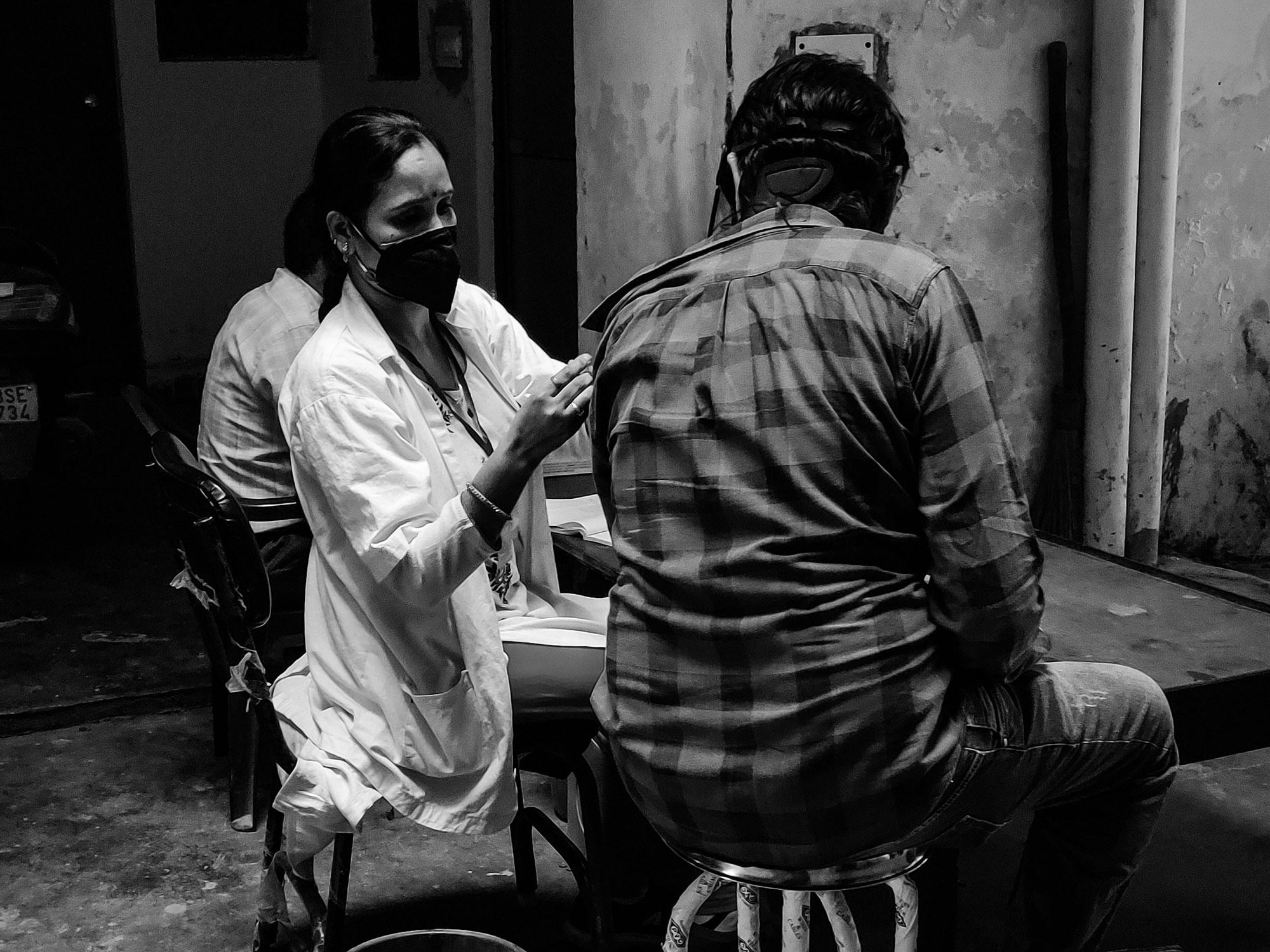“Coming Back from the Dead” Is No Longer Science Fiction
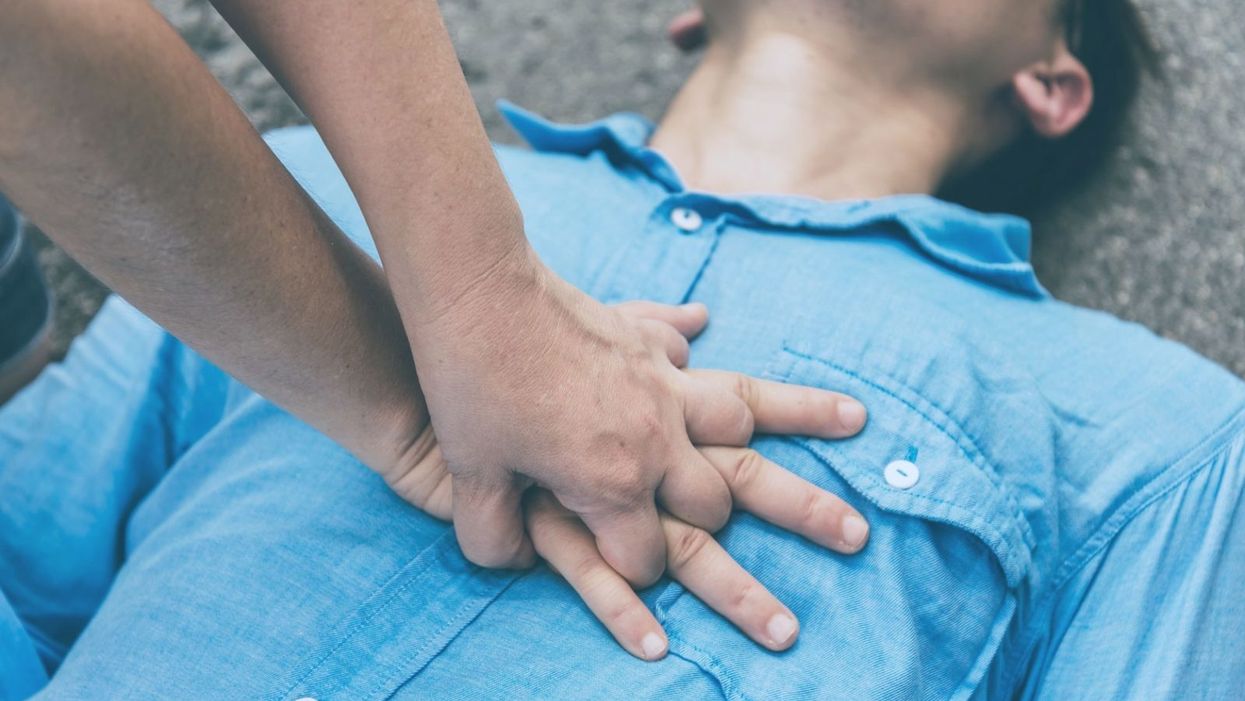
A man receiving cardiopulmonary resuscitation (CPR).
Last year, there were widespread reports of a 53-year-old Frenchman who had suffered a cardiac arrest and "died," but was then resuscitated back to life 18 hours after his heart had stopped.
The once black-and-white line between life and death is now blurrier than ever.
This was thought to have been possible in part because his body had progressively cooled down naturally after his heart had stopped, through exposure to the outside cold. The medical team who revived him were reported as being "stupefied" that they had been able to bring him back to life, in particular since he had not even suffered brain damage.
Interestingly, this man represents one of a growing number of extraordinary cases in which people who would otherwise be declared dead have now been revived. It is a testament to the incredible impact of resuscitation science -- a science that is providing opportunities to literally reverse death, and in doing so, shedding light on the age-old question of what happens when we die.
Death: Past and Present
Throughout history, the boundary between life and death was marked by the moment a person's heart stopped, breathing ceased, and brain function shut down. A person became motionless, lifeless, and was deemed irreversibly dead. This is because once the heart stops beating, blood flow stops and oxygen is cut off from all the body's organs, including the brain. Consequently, within seconds, breathing stops and brain activity comes to a halt. Since the cessation of the heart literally occurs in a "moment," the philosophical notion of a specific point in time of "irreversible" death still pervades society today. The law, for example, relies on "time of death," which corresponds to when the heart stops beating.
The advent of cardiopulmonary resuscitation (CPR) in the 1960s was revolutionary, demonstrating that the heart could potentially be restarted after it had stopped, and what had been a clear black-and-white line was shown to be potentially reversible in some people. What was once called death—the ultimate end point— was now widely called cardiac arrest, and became a starting point.
From then on, it was only if somebody had requested not to be resuscitated or when CPR was deemed to have failed that people would be declared dead by "cardiopulmonary criteria." Biologically, cardiac arrest and death by cardiopulmonary criteria are the same process, albeit marked at different points in time depending on when a declaration of death is made.
The apparent irreversibility of death as we know it may not necessarily reflect true irretrievable cellular damage inside the body.
Clearly, contrary to many people's perceptions, cardiac arrest is not a heart attack; it is the final step in death irrespective of cause, whether it be a stroke, a heart attack, a car accident, an overwhelming infection or cancer. This is how roughly 95 percent of the population are declared dead.
The only exception is the small proportion of people who may have suffered catastrophic brain injuries, but whose hearts can be artificially kept beating for a period of time on life-support machines. These people can be legally declared dead based on brain death criteria before their hearts have stopped. This is because the brain can die either from oxygen starvation after cardiac arrest or from massive trauma and internal bleeding. Either way, the brain dies hours or possibly longer after these injuries have taken place and not just minutes.
A Profound Realization
What has become increasingly clear is that the apparent irreversibility of death as we know it may not necessarily reflect true irretrievable cellular damage inside the body. This is consistent with a mounting understanding: it is only after a person actually dies that the cells in the body start to undergo their own process of death. Intriguingly, this process is something that can now be manipulated through medical intervention. Being cold is one of the factors that slows down the rate of cellular decay. The 53-year-old Frenchman's case and the other recent cases of resuscitation after prolonged periods of time illustrate this new understanding.
Last week's earth-shattering announcement by neuroscientist Dr. Nenad Sestan and his team out of Yale, published in the prestigious scientific journal Nature, provides further evidence that a time gap exists between actual death and cellular death in cadavers. In this seminal study, these researchers were able to restore partial function in pig brains four hours after their heads were severed from their bodies. These results follow from the pioneering work in 2001 of geneticist Fred Gage and colleagues from the Salk Institute, also published in Nature, which demonstrated the possibility of growing human brain cells in the laboratory by taking brain biopsies from cadavers in the mortuary up to 21 hours post-mortem.
The once black-and-white line between life and death is now blurrier than ever. Some people may argue this means these humans and pigs weren't truly "dead." However, that is like saying the people who were guillotined during the French Revolution were also not dead. Clearly, that is not the case. They were all dead. The problem is not death; it's our reliance on an outdated philosophical, rather than biological, notion of death.
Death can no longer be considered an absolute moment but rather a process that can be reversed even many hours after it has taken place.
But the distinction between irreversibility from a medical perspective and biological irreversibility may not matter much from a pragmatic perspective today. If medical interventions do not exist at any given time or place, then of course death cannot be reversed.
However, it is crucial to distinguish between biologically and medically: When "irreversible" loss of function arises due to inadequate treatment, then a person could be potentially brought back in the future when an alternative therapy becomes available, or even today if he or she dies in a location where novel treatments can slow down the rate of cell death. However, when true irreversible loss of function arises from a biological perspective, then no treatment will ever be able to reverse the process, whether today, tomorrow, or in a hundred years.
Probing the "Grey Zone"
Today, thanks to modern resuscitation science, death can no longer be considered an absolute moment but rather a process that can be reversed even many hours after it has taken place. How many hours? We don't really know.
One of the wider implications of our medical advances is that we can now study what happens to the human mind and consciousness after people enter the "grey zone," which marks the time after the heart stops, but before irreversible and irretrievable cell damage occurs, and people are then brought back to life. Millions have been successfully revived and many have reported experiencing a unique, universal, and transformative mental state.
Were they "dead"? Yes, according to all the criteria we have ever used. But they were able to be brought back before their "dead" bodies had reached the point of permanent, irreversible cellular damage. This reflects the period of death for all of us. So rather than a "near-death experience," I prefer a new terminology to describe these cases -- "an actual-death experience." These survivors' unique experiences are providing eyewitness testimonies of what we will all be likely to experience when we die.
Such an experience reportedly includes seeing a warm light, the presence of a compassionate perfect individual, deceased relatives, a review of their lives, a judgment of their actions and intentions as they pertain to their humanity, and in some cases a sensation of seeing doctors and nurses working to resuscitate them.
Are these experiences compatible with hallucinations or illusions? No -- in part, because these people have described real, verifiable events, which, by definition are not hallucinations, and in part, because their experiences are not compatible with confused and delirious memories that characterize oxygen deprivation.
The challenge for us scientifically is understanding how this is possible at a time when all our science tells us the brain shuts down.
For instance, it is hard to classify a structured meaningful review of one's life and one's humanity as hallucinatory or illusory. Instead, these experiences represent a new understanding of the overall human experience of death. As an intensive care unit physician for more than 10 years, I have seen numerous cases where these reports have been corroborated by my colleagues. In short, these survivors have been known to come back with reports of full consciousness, with lucid, well-structured thought processes and memory formation.
The challenge for us scientifically is understanding how this is possible at a time when all our science tells us the brain shuts down. The fact that these experiences occur is a paradox and suggests the undiscovered entity we call the "self," "consciousness," or "psyche" – the thing that makes us who we are - may not become annihilated at the point of so-called death.
At New York University, the State University of New York, and across 20 hospitals in the U.S. and Europe, we have brought together a new multi-disciplinary team of experts across many specialties, including neurology, cardiology, and intensive care. Together, we hope to improve cardiac arrest prevention and treatment, as well as to address the impact of new scientific discoveries on our understanding of what happens at death.
One of our first studies, Awareness during Resuscitation (AWARE), published in the medical journal Resuscitation in 2014, confirmed that some cardiac arrest patients report a perception of awareness without recall; others report detailed memories and experiences; and a few report full auditory and visual awareness and consciousness of their experience, from a time when brain function would be expected to have ceased.
While you probably have some opinion or belief about this based upon your own philosophical, religious, or cultural background, you may not realize that exploring what happens when we die is now a subject that science is beginning to investigate.
There is no question more intriguing to humankind. And for the first time in our history, we may finally uncover some real answers.
Employers can create a culture of “Excellence From Anywhere” to reduce the risk of inequality among office-centric, hybrid, and fully remote employees.
COVID-19 prompted numerous companies to reconsider their approach to the future of work. Many leaders felt reluctant about maintaining hybrid and remote work options after vaccines became widely available. Yet the emergence of dangerous COVID variants such as Omicron has shown the folly of this mindset.
To mitigate the risks of new variants and other public health threats, as well as to satisfy the desires of a large majority of employees who express a strong desire in multiple surveys for a flexible hybrid or fully remote schedule, leaders are increasingly accepting that hybrid and remote options represent the future of work. No wonder that a February 2022 survey by the Federal Reserve Bank of Richmond showed that more and more firms are offering hybrid and fully-remote work options. The firms expect to have more remote workers next year and more geographically-distributed workers.
Although hybrid and remote work mitigates public health risks, it poses another set of health concerns relevant to employee wellbeing, due to the threat of proximity bias. This term refers to the negative impact on work culture from the prospect of inequality among office-centric, hybrid, and fully remote employees.
The difference in time spent in the office leads to concerns ranging from decreased career mobility for those who spend less facetime with their supervisor to resentment building up against the staff who have the most flexibility in where to work. In fact, a January 2022 survey by the company Slack of over 10,000 knowledge workers and their leaders shows that proximity bias is the top concern – expressed by 41% of executives - about hybrid and remote work.
To address this problem requires using best practices based on cognitive science for creating a culture of “Excellence From Anywhere.” This solution is based on guidance that I developed for leaders at 17 pioneering organizations for a company culture fit for the future of work.
Protect from proximity bias via the "Excellence From Anywhere" strategy
So why haven’t firms addressed the obvious problem of proximity bias? Any reasonable external observer could predict the issues arising from differences of time spent in the office.
Unfortunately, leaders often fail to see the clear threat in front of their nose. You might have heard of black swans: low-probability, high-impact threats. Well, the opposite kind of threats are called gray rhinos: obvious dangers that we fail to see because of our mental blindspots. The scientific name for these blindspots is cognitive biases, which cause leaders to resist best practices in transitioning to a hybrid-first model.
The core idea is to get all of your workforce to pull together to achieve business outcomes: the location doesn’t matter.
Leaders can address this by focusing on a shared culture of “Excellence From Anywhere.” This term refers to a flexible organizational culture that takes into account the nature of an employee's work and promotes evaluating employees based on task completion, allowing remote work whenever possible.
Addressing Resentments Due to Proximity Bias
The “Excellence From Anywhere” strategy addresses concerns about treatment of remote workers by focusing on deliverables, regardless of where you work. Doing so also involves adopting best practices for hybrid and remote collaboration and innovation.
By valuing deliverables, collaboration, and innovation through a focus on a shared work culture of “Excellence From Anywhere,” you can instill in your employees a focus on deliverables. The core idea is to get all of your workforce to pull together to achieve business outcomes: the location doesn’t matter.
This work culture addresses concerns about fairness by reframing the conversation to focus on accomplishing shared goals, rather than the method of doing so. After all, no one wants their colleagues to have to commute out of spite.
This technique appeals to the tribal aspect of our brains. We are evolutionarily adapted to living in small tribal groups of 50-150 people. Spending different amounts of time in the office splits apart the work tribe into different tribes. However, cultivating a shared focus on business outcomes helps mitigate such divisions and create a greater sense of unity, alleviating frustrations and resentments. Doing so helps improve employee emotional wellbeing and facilitates good collaboration.
Solving the facetime concerns of proximity bias
But what about facetime with the boss? To address this problem necessitates shifting from the traditional, high-stakes, large-scale quarterly or even annual performance evaluations to much more frequent weekly or biweekly, low-stakes, brief performance evaluation through one-on-one in-person or videoconference check-ins.
Supervisees agree with their supervisor on three to five weekly or biweekly performance goals. Then, 72 hours before their check-in meeting, they send a brief report, under a page, to their boss of how they did on these goals, what challenges they faced and how they overcame them, a quantitative self-evaluation, and proposed goals for next week. Twenty-four hours before the meeting, the supervisor responds in a paragraph-long response with their initial impressions of the report.
It’s hard to tell how much any employee should worry about not being able to chat by the watercooler with their boss: knowing exactly where they stand is the key concern for employees, and they can take proactive action if they see their standing suffer.
At the one-on-one, the supervisor reinforces positive aspects of performance and coaches the supervisee on how to solve challenges better, agrees or revises the goals for next time, and affirms or revises the performance evaluation. That performance evaluation gets fed into a constant performance and promotion review system, which can replace or complement a more thorough annual evaluation.
This type of brief and frequent performance evaluation meeting ensures that the employee’s work is integrated with efforts by the supervisor’s other employees, thereby ensuring more unity in achieving business outcomes. It also mitigates concerns about facetime, since all get at least some personalized attention from their team leader. But more importantly, it addresses the underlying concerns about career mobility by giving all staff a clear indication of where they stand at all times. After all, it’s hard to tell how much any employee should worry about not being able to chat by the watercooler with their boss: knowing exactly where they stand is the key concern for employees, and they can take proactive action if they see their standing suffer.
Such best practices help integrate employees into a work culture fit for the future of work while fostering good relationships with managers. Research shows supervisor-supervisee relationships are the most critical ones for employee wellbeing, engagement, and retention.
Conclusion
You don’t have to be the CEO to implement these techniques. Lower-level leaders of small rank-and-file teams can implement these shifts within their own teams, adapting their culture and performance evaluations. And if you are a staff member rather than a leader, send this article to your supervisor and other employees at your company: start a conversation about the benefits of addressing proximity bias using such research-based best practices.
Scientists at Baylor College of Medicine developed a vaccine called Corbevax that, unlike mRNA vaccines, can be mass produced using technology already in place in low- and middle-income countries. It's now being administered in India to children aged 12-14.
When the COVID-19 pandemic began invading the world in late 2019, Peter Hotez and Maria Elena Bottazzi set out to create a low-cost vaccine that would help inoculate populations in low- and middle-income countries. The scientists, with their prior experience of developing inexpensive vaccines for the world’s poor, had anticipated that the global rollout of Covid-19 jabs would be marked with several inequities. They wanted to create a patent-free vaccine to bridge this gap, but the U.S. government did not seem impressed, forcing the researchers to turn to private philanthropies for funds.
Hotez and Bottazzi, both scientists at the Texas Children’s Hospital Center for Vaccine Development at Baylor College of Medicine, raised about $9 million in private funds. Meanwhile, the U.S. government’s contribution stood at $400,000.
“That was a very tough time early on in the pandemic, you know, trying to do the work and raise the money for it at the same time,” says Hotez, who was nominated in February for a Nobel Peace Prize with Bottazzi for their COVID-19 vaccine. He adds that at the beginning of the pandemic, governments emphasized speed, innovation and rapidly immunizing populations in North America and Europe with little consideration for poorer countries. “We knew this [vaccine] was going to be the answer to global vaccine inequality, but I just wish the policymakers had felt the same,” says Hotez.
Over the past two years, the world has witnessed 488 million COVID-19 infections and over 61 million deaths. Over 11 billion vaccine doses have been administered worldwide; however, the global rollout of COVID-19 vaccines is marked with alarming socio-economic inequities. For instance, 72 percent of the population in high-income countries has received at least one dose of the vaccine, whereas the number stands at 15 percent in low-income countries.
This inequity is worsening vulnerabilities across the world, says Lawrence Young, a virologist and co-lead of the Warwick Health Global Research Priority at the UK-based University of Warwick. “As long as the virus continues to spread and replicate, particularly in populations who are under-vaccinated, it will throw up new variants and these will remain a continual threat even to those countries with high rates of vaccination,” says Young, “Therefore, it is in all our interests to ensure that vaccines are distributed equitably across the world.”
“When your house is on fire, you don't call the patent attorney,” says Hotez. “We wanted to be the fire department.”
The vaccine developed by Hotez and Bottazzi recently received emergency use authorisation in India, which plans to manufacture 100 million doses every month. Dubbed ‘Corbevax’ by its Indian maker, Biological E Limited, the vaccine is now being administered in India to children aged 12-14. The patent-free arrangement means that other low- and middle-income countries could also produce and distribute the vaccine locally.
“When your house is on fire, you don't call the patent attorney, you call the fire department,” says Hotez, commenting on the intellectual property rights waiver. “We wanted to be the fire department.”
The Inequity
Vaccine equity simply means that all people, irrespective of their location, should have equal access to vaccines. However, data suggests that the global COVID-19 vaccine rollout has favoured those in richer countries. For instance, high-income countries like the UAE, Portugal, Chile, Singapore, Australia, Malta, Hong Kong and Canada have partially vaccinated over 85 percent of their populations. This percentage in poorer countries, meanwhile, is abysmally low – 2.1 percent in Yemen, 4.6 in South Sudan, 5 in Cameroon, 9.9 in Burkina Faso, 10 in Nigeria, 12 in Somalia, 12 in Congo, 13 in Afghanistan and 21 in Ethiopia.
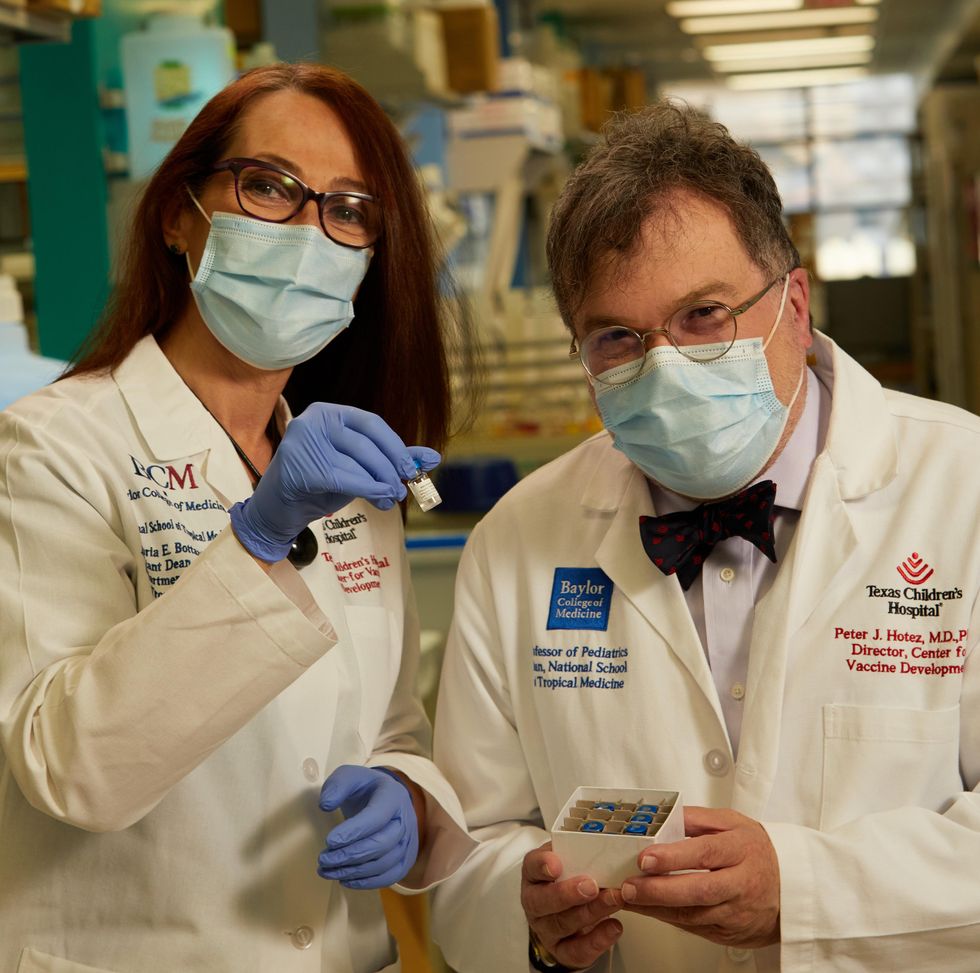
In late 2019, scientists Peter Hotez and Maria Elena Bottazzi set out to create a low-cost vaccine that would help inoculate populations in low- and middle-income countries. In February, they were nominated for a Nobel Peace Prize.
Texas Children's Hospital
The COVID-19 vaccination coverage is particularly low in African countries, and according to Shabir Madhi, a vaccinologist at the University of the Witwatersrand, Johannesburg and co-director of African Local Initiative for Vaccinology Expertise, vaccine access and inequity remains a challenge in Africa. Madhi adds that a lack of vaccine access has affected the pandemic’s trajectory on the continent, but a majority of its people have now developed immunity through natural infection. “This has come at a high cost of loss of lives,” he says.
COVID-19 vaccines mean a significant financial burden for poorer countries, which spend an average of $41 per capita annually on health, while the average cost of every COVID-19 vaccine dose ranges between $2 and $40 in addition to a distribution cost of $3.70 per person for two doses. In December last year, the World Health Organisation (WHO) set a goal of immunizing 70 percent of the population of all countries by mid-2022. This, however, means that low-income countries would have to increase their health expenditure by an average of 56.6 percent to cover the cost, as opposed to 0.8 per cent in high-income countries.
Reflecting on the factors that have driven global inequity in COVID-19 vaccine distribution, Andrea Taylor, assistant director of programs at the Duke Global Health Innovation Center, says that wealthy nations took the risk of investing heavily in the development and scaling up of COVID-19 vaccines – at a time when there was little evidence to show that vaccines would work. This reserved a place for these nations at the front of the queue when doses started rolling off production lines. Lower-income countries, meanwhile, could not afford such investments.
“Now, however, global supply is not the issue,” says Taylor. “We are making plenty of doses to meet global need. The main problem is infrastructure to get the vaccine where it is most needed in a predictable and timely way and to ensure that countries have all the support they need to store, transport, and use the vaccine once it is received.”
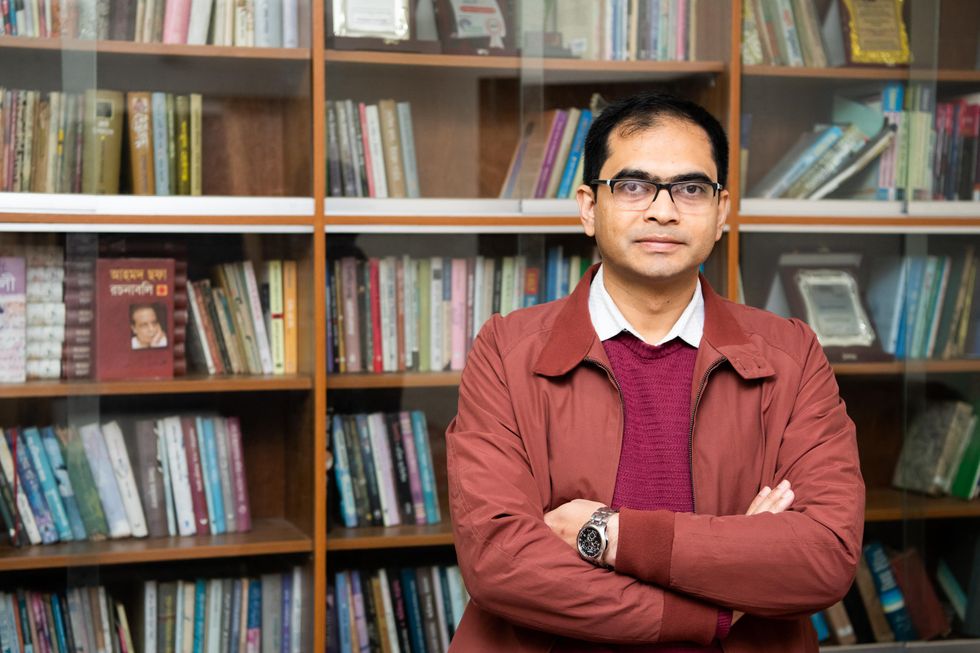
Taufique Joarder, vice-chairperson of Bangladesh's Public Health Foundation, sees the need for more trials and data before Corbevax is made available to the general population.
In addition to global inequities in vaccination coverage, there are inequities within nations. Taufique Joarder, vice-chairperson of Bangladesh’s Public Health Foundation, points to the situation in his country, where vaccination coverage in rural and economically disadvantaged communities has suffered owing to weak vaccine-promotion initiatives and the difficulty many people face in registering online for jabs.
Joarder also cites the example of the COVID-19 immunization drive for children aged 12 years and above. “[Children] are given the Pfizer vaccine, which requires an ultralow temperature for storage. This is almost impossible to administer in many parts of the country, especially the rural areas. So, a large proportion of the children are being left out of vaccination,” says Joarder, adding that Corbevax, which is cheaper and requires regular temperature refrigeration “can be an excellent alternative to Pfizer for vaccinating rural children.”
Corbevax vs. mRNA Vaccines
As opposed to most other COVID-19 vaccines, which use the new Messenger RNA (mRNA) vaccine technology, Corbevax is an “old school” vaccine, says Hotez. The vaccine is made through microbial fermentation in yeast, similar to the process used to produce the recombinant hepatitis B vaccine, which has been administered to children in several countries for decades. Hence, says Hotez, the technology to produce Corbevax at large scales is already in place in countries like Vietnam, Bangladesh, India, Indonesia, Brazil, Argentina, among many others.
“So if you want to rapidly develop and produce and empower low- and middle-income countries, this is the technology to do it,” he says.
“Global access to high-quality vaccines will require serious investment in other types of COVID-19 vaccines," says Andrea Taylor.
The COVID-19 vaccines created by Pfizer-BioNTech and Moderna marked the first time that mRNA vaccine technology was approved for use. However, scientists like Young feel that there is “a need to be pragmatic and not seduced by new technologies when older, tried and tested approaches can also be effective.” Taylor, meanwhile, says that although mRNA vaccines have dominated the COVID-19 vaccine market in the U.S., “there is no clear grounding for this preference in the data we have so far.” She adds that there is also growing evidence that the immunity from these shots may not hold up as well over time as that of vaccines using different platforms.
“The mRNA vaccines are well suited to wealthy countries with sufficient ultra-cold storage and transportation infrastructure, but these vaccines are divas and do not travel well in the rest of the world,” says Taylor. “Global access to high-quality vaccines will require serious investment in other types of COVID-19 vaccines, such as the protein subunit platform used by Novavax and Corbevax. These require only standard refrigeration, can be manufactured using existing facilities all over the world, and are easy to transport.”
Joarder adds that Corbevax is cheaper due to the developers’ waived intellectual rights. It could also be used as a booster vaccine in Bangladesh, where only five per cent of the population has currently received booster doses. “If this vaccine is proved effective for heterologous boosting, [meaning] it works well and is well tolerated as a booster with other vaccines that are available in Bangladesh, this can be useful,” says Joarder.
According to Hotez, Corbevax can play several important roles - as a standalone adult or paediatric vaccine, and as a booster for other vaccines. Studies are underway to determine Corbevax’s effectiveness in these regards, he says.
Need for More Data
Biological E conducted two clinical trials involving 3000 subjects in India, and found Corbevax to be “safe and immunogenic,” with 90 percent effectiveness in preventing symptomatic infections from the original strain of COVID-19 and over 80 percent effectiveness against the Delta variant. The vaccine is currently in use in India, and according to Hotez, it’s in the pipeline at different stages in Indonesia, Bangladesh and Botswana.
However, Corbevax is yet to receive emergency use approval from the WHO. Experts such as Joarder see the need for more trials and data before it is made available to the general population. He says that while the WHO’s emergency approval is essential for global scale-up of the vaccine, we need data to determine age-stratified efficacy of the vaccine and whether it can be used for heterologous boosting with other vaccines. “According to the most recent data, the 100 percent circulating variant in Bangladesh is Omicron. We need to know how effective is Corbevax against the Omicron variant,” says Joarder.
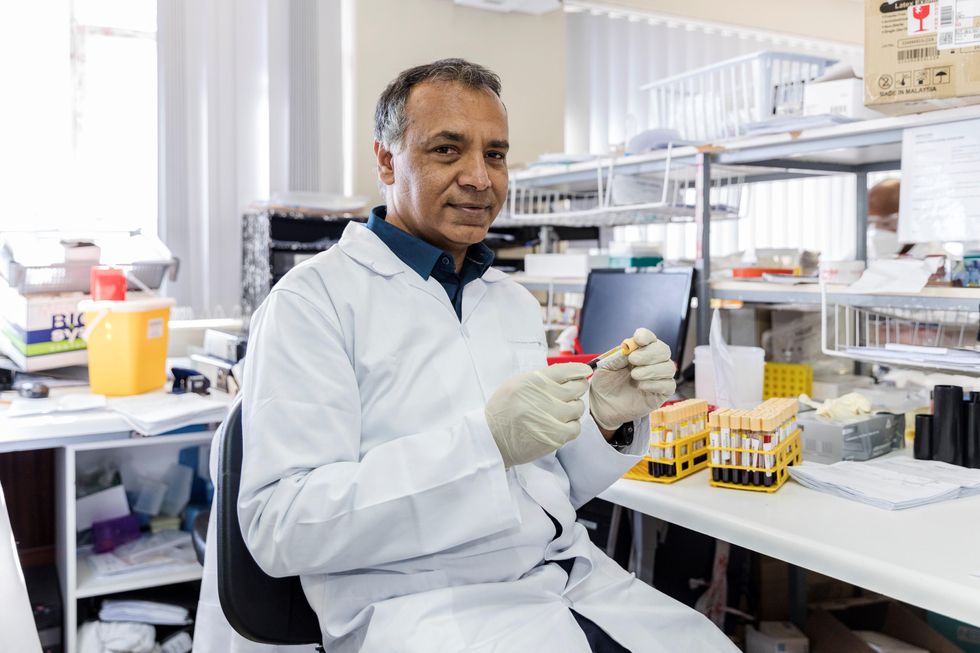
Shabir Madhi, a vaccinologist at the University of the Witwatersrand, Johannesburg and co-director of the African Local Initiative for Vaccinology Expertise, says that a majority of people in Africa have now developed immunity through natural infection. “This has come at a high cost of loss of lives."
Shivan Parusnath
Others, meanwhile, believe that availing vaccines to poorer countries is not enough to resolve the inequity. Young, the Warwick virologist, says that the global vaccination rollout has also suffered from a degree of vaccine hesitancy, echoing similar observations by President Biden and Pfizer’s CEO. The problem can be blamed on poor communication about the benefits of vaccination. “The Corbevax vaccine [helps with the issues of] patent protection, vaccine storage and distribution, but governments need to ensure that their people are clearly informed.” Notably, however, some research has found higher vaccine willingness in lower-income countries than in the U.S.
Young also emphasized the importance of establishing local vaccination stations to improve access. For some countries, meanwhile, it may be too late. Speaking about the African continent, Madhi says that Corbevax has arrived following the peak of the crisis and won’t reverse the suffering and death that has transpired because of vaccine hoarding by high-income countries.
“The same goes for all the sudden donations from countries such as France - pretty much of little to no value when the pandemic is at its tail end,” says Madhi. “This, unfortunately, is a repeat of the swine flu pandemic in 2009, when vaccines only became available to Africa after the pandemic had very much subsided.”

